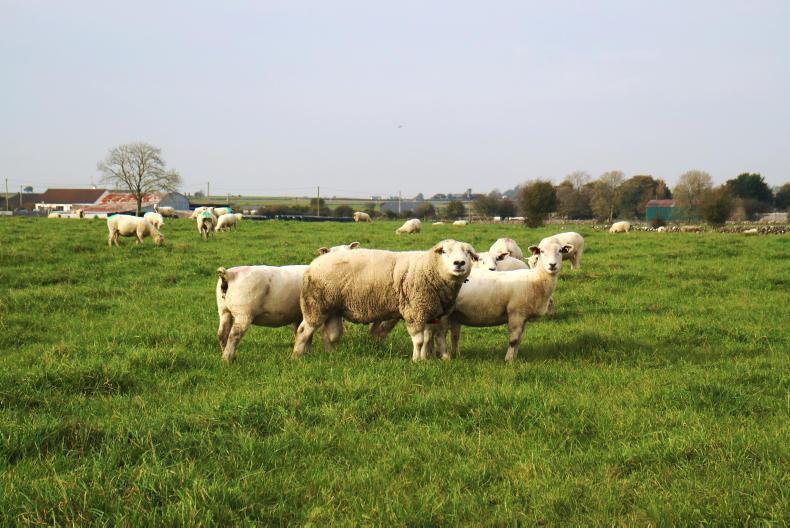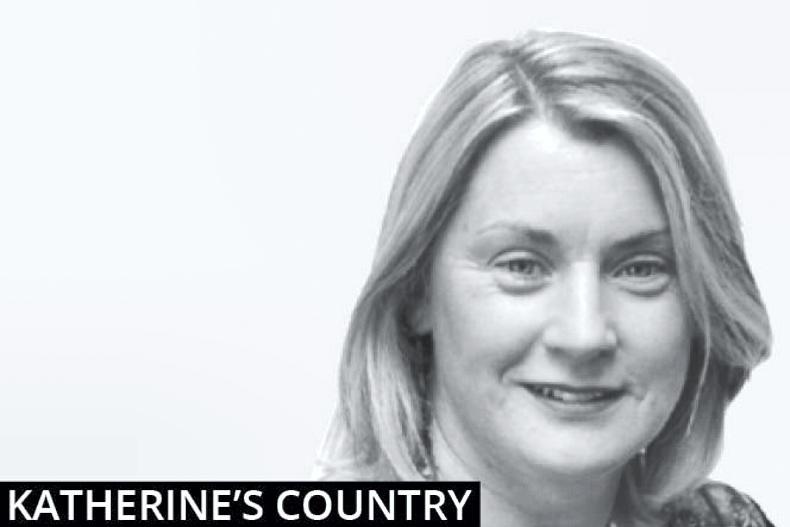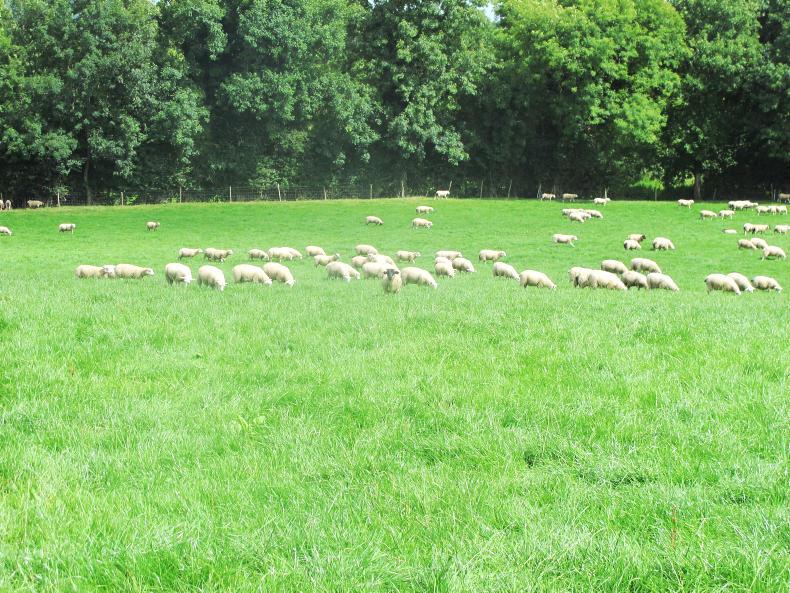While 2017 lamb prices have followed the seasonal downward pattern of previous years, the big benefit for primary producers is that prices have averaged 25c/kg to 35c/kg above 2016. This is despite factories on a number of occasions attempting to reduce prices but being forced to increase base quotes.
The big significance is that average returns for a 20kg carcase in recent weeks have held above the €100 mark that many producers see as the minimum price necessary to generate a return and allow a level of investment to take place. February lambing producers that have a good percentage of their lambs sold will be faring much better, as are producers with more scope to push top-quality lambs into the butcher and wholesale market.
While it is still early days to judge, it also looks as if there will be good demand for store lambs with surplus fodder in some areas leading to less second-cut silage while some beef farmers are entering the market and splitting the risk of putting all their investment into cattle.
Lower supplies of New Zealand lamb coming into the EU and firm market demand in high-value emerging markets is said to have contributed to the positive trade in recent months, as did Ramadan falling at a time when throughput was only starting to grow.
However, one element that is surely helping the trade is lower volumes of sheepmeat. This is stemming from two avenues – fewer spring lambs processed and at lighter weights. There should certainly be a lesson learnt from this – keeping lambs moving as they come fit and reducing the volume of overweight carcases and free meat flowing into factories will in general help to prolong and generate extra demand. The only downside is that in recent weeks lighter carcases are in some cases resulting from poor lamb kill-out.
Breeding season optimism
The fact that cull ewes are also a positive trade is incentivising farmers to turn over ewes faster and maintain a younger, more productive flock. This is capable of delivering on many levels with fewer issues faced by culling out problem breeders. The opportunity should also be taken of culling persistent poor performers as it is these animals that will drag down the overall performance of the flock. This can only be achieved by having a means of recording performance and this is one area that is worth investing time and money in.
Optimum lambing date
The favourable market performance in 2017 is leading to some farmers reviewing their lambing date. This follows many midseason producers pushing out their lambing date in recent years on the back of unfavourable weather and low grass growth rates increasing costs, while a number of early lamb producers also switched their lambing date or moved a percentage of their flock to later lambing due to uncertain market returns and losses incurred.
The decision to move the lambing date should be based on more aspects than price alone; nevertheless, it is important to also be mindful of market dynamics. The big unknown in the market continues to be the potential fallout from Brexit. There are numerous questions that will not be answered in the short term such as what, if any, level of tariffs could be applied to sheepmeat exports from Ireland to the UK, the consequences of these tariffs, if applied, on the trade of 400,000 sheep imported from Northern Ireland and the future of the New Zealand tariff-free quota of about 227,000t.
All of these factors are up in the air and are unlikely to be discussed in detail, never mind resolved, before this year’s breeding season. Therefore, the more likely factors that will possibly influence markets in the first half of 2018 are the potential carryover of hoggets into 2018 and the likely demand from Easter and Ramadan falling just a few weeks apart.
Easter Sunday falls on 1 April 2018 while Ramadan moves two weeks earlier, starting on 15/16 May and ending on 14 June. Easter and Ramadan have been variable in their potential to increase prices in recent years but both have helped to generate extra demand and help underpin prices for longer, as we have seen earlier this year.
Note that Eid al-Adha, which lifted demand and live exports in 2016, will also move forward from 1 September 2017 to 22 August in 2018.
This could present an opportunity for some producers to target this market with demand likely to remain strong in the period post-Easter leading through to Ramadan. This will lead to a change in direction for some breeders with a lambing date of 1 February required to have the first lambs coming fit for slaughter three months later on 1 May.
Producers targeting the Easter trade will need to lamb a month earlier, translating to breeding commencing in just a few weeks’ time. Plans will need to be well in motion for this system with later lambing a more realistic approach for flockowners toying with the idea of moving their lambing date earlier or tweaking it for a percentage of their ewes. If this is the approach taken, account needs to be taken of the effect this will have on grass supplies this autumn and next spring.
Grass growth
For most producers, matching the lambing date to grass supply will remain the most suitable system. This is particularly the case for higher-stocked farms where demand for grass rises rapidly in spring. Going on the experience of 2016 and 2017, a lambing date of early to mid-March has worked best for lowland producers to match grass demand with supply.
Moving too far ahead of normal grass growth will lead to concentrate feeding required for ewes, while delaying the lambing date for too long will lead to a surplus developing earlier and difficulties in managing grass.
Assessing the most suitable lambing date should now be the priority with all other decisions such as the start of the breeding season, optimum time to purchase replacements and autumn-grazing plan all influenced by this.
Read more
Special focus: sheep breeding and sales season
While 2017 lamb prices have followed the seasonal downward pattern of previous years, the big benefit for primary producers is that prices have averaged 25c/kg to 35c/kg above 2016. This is despite factories on a number of occasions attempting to reduce prices but being forced to increase base quotes.
The big significance is that average returns for a 20kg carcase in recent weeks have held above the €100 mark that many producers see as the minimum price necessary to generate a return and allow a level of investment to take place. February lambing producers that have a good percentage of their lambs sold will be faring much better, as are producers with more scope to push top-quality lambs into the butcher and wholesale market.
While it is still early days to judge, it also looks as if there will be good demand for store lambs with surplus fodder in some areas leading to less second-cut silage while some beef farmers are entering the market and splitting the risk of putting all their investment into cattle.
Lower supplies of New Zealand lamb coming into the EU and firm market demand in high-value emerging markets is said to have contributed to the positive trade in recent months, as did Ramadan falling at a time when throughput was only starting to grow.
However, one element that is surely helping the trade is lower volumes of sheepmeat. This is stemming from two avenues – fewer spring lambs processed and at lighter weights. There should certainly be a lesson learnt from this – keeping lambs moving as they come fit and reducing the volume of overweight carcases and free meat flowing into factories will in general help to prolong and generate extra demand. The only downside is that in recent weeks lighter carcases are in some cases resulting from poor lamb kill-out.
Breeding season optimism
The fact that cull ewes are also a positive trade is incentivising farmers to turn over ewes faster and maintain a younger, more productive flock. This is capable of delivering on many levels with fewer issues faced by culling out problem breeders. The opportunity should also be taken of culling persistent poor performers as it is these animals that will drag down the overall performance of the flock. This can only be achieved by having a means of recording performance and this is one area that is worth investing time and money in.
Optimum lambing date
The favourable market performance in 2017 is leading to some farmers reviewing their lambing date. This follows many midseason producers pushing out their lambing date in recent years on the back of unfavourable weather and low grass growth rates increasing costs, while a number of early lamb producers also switched their lambing date or moved a percentage of their flock to later lambing due to uncertain market returns and losses incurred.
The decision to move the lambing date should be based on more aspects than price alone; nevertheless, it is important to also be mindful of market dynamics. The big unknown in the market continues to be the potential fallout from Brexit. There are numerous questions that will not be answered in the short term such as what, if any, level of tariffs could be applied to sheepmeat exports from Ireland to the UK, the consequences of these tariffs, if applied, on the trade of 400,000 sheep imported from Northern Ireland and the future of the New Zealand tariff-free quota of about 227,000t.
All of these factors are up in the air and are unlikely to be discussed in detail, never mind resolved, before this year’s breeding season. Therefore, the more likely factors that will possibly influence markets in the first half of 2018 are the potential carryover of hoggets into 2018 and the likely demand from Easter and Ramadan falling just a few weeks apart.
Easter Sunday falls on 1 April 2018 while Ramadan moves two weeks earlier, starting on 15/16 May and ending on 14 June. Easter and Ramadan have been variable in their potential to increase prices in recent years but both have helped to generate extra demand and help underpin prices for longer, as we have seen earlier this year.
Note that Eid al-Adha, which lifted demand and live exports in 2016, will also move forward from 1 September 2017 to 22 August in 2018.
This could present an opportunity for some producers to target this market with demand likely to remain strong in the period post-Easter leading through to Ramadan. This will lead to a change in direction for some breeders with a lambing date of 1 February required to have the first lambs coming fit for slaughter three months later on 1 May.
Producers targeting the Easter trade will need to lamb a month earlier, translating to breeding commencing in just a few weeks’ time. Plans will need to be well in motion for this system with later lambing a more realistic approach for flockowners toying with the idea of moving their lambing date earlier or tweaking it for a percentage of their ewes. If this is the approach taken, account needs to be taken of the effect this will have on grass supplies this autumn and next spring.
Grass growth
For most producers, matching the lambing date to grass supply will remain the most suitable system. This is particularly the case for higher-stocked farms where demand for grass rises rapidly in spring. Going on the experience of 2016 and 2017, a lambing date of early to mid-March has worked best for lowland producers to match grass demand with supply.
Moving too far ahead of normal grass growth will lead to concentrate feeding required for ewes, while delaying the lambing date for too long will lead to a surplus developing earlier and difficulties in managing grass.
Assessing the most suitable lambing date should now be the priority with all other decisions such as the start of the breeding season, optimum time to purchase replacements and autumn-grazing plan all influenced by this.
Read more
Special focus: sheep breeding and sales season










SHARING OPTIONS